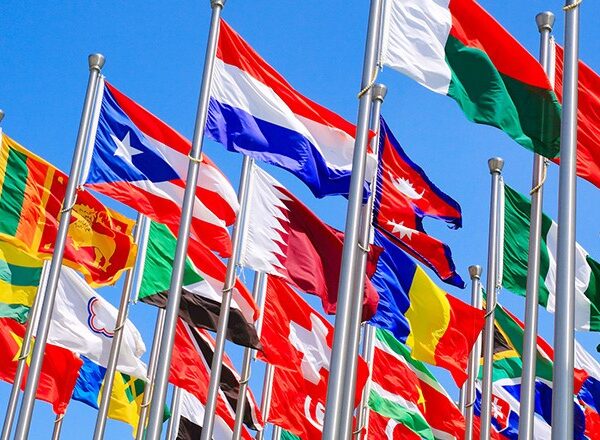The Top Ten Countries With The Highest Immigration Rate drives into the fascinating world of global migration where people cross borders in search of new opportunities, safety or improved quality of life. Immigration rates reveal how many individuals are choosing to settle in a particular country driven by factors like strong economies, political stability, access to education or probably family ties. This exploration highlights the top ten nations that consistently attract the most immigrants, offering a glimpse into what makes these destinations so appealing.
From vibrant job markets to inclusive policies, these countries serve as magnets for immigrants. By examining immigration trends, one can better understand how global migration patterns shape cultural diversity, fuel economic growth, and influence international relationships. The discussion sheds light on the dynamic nature of human movement, showing how it transforms societies and strengthens workforces. Providing an engaging look at the leading countries drawing immigrants today. It’s a compelling read for anyone eager to learn about the forces driving global demographics and the societal changes that follow, making it a valuable resource for understanding the modern world.
The Top Ten Countries With The Highest Immigration Rate In The World (2025)
10. Switzerland

Immigration Rate: Approximately 29% of the population are immigrants.
Immigration Profile: Switzerland’s strong economy, high standard of living, and central European location make it a magnet for migrants. Foreign-born residents, primarily from Germany, Italy, France, and Turkey, contribute to the workforce in banking, technology, and hospitality. The country also attracts asylum seekers due to its humanitarian policies. Recent trends show net immigration increasing, with immigrants filling labor gaps in an aging population.
Reasons for High Immigration: Economic stability, competitive salaries, and access to quality education draw skilled professionals. Low personal income tax rates and safety further enhance appeal. The country’s role as a global financial hub and its proximity to EU nations facilitate cross-border migration.
Impact: Immigrants boost economic productivity and cultural diversity but spark debates on integration and housing. Policies aim to balance economic benefits with social cohesion, with immigration often a topic in national referendums.
9. Australia

Immigration Rate: Around 30% of the population are immigrants.
Immigration Profile: Australia’s multicultural society, built on decades of immigration, welcomes migrants from the UK, China, India, and New Zealand. Skilled migration programs target professionals to address labor shortages, while humanitarian policies support refugees. Recent data shows significant net migration, reflecting Australia’s ongoing appeal.
Reasons for High Immigration: A robust economy, high quality of life, and diverse job opportunities attract migrants. The education system draws international students, many of whom stay post-graduation. Post-World War II policies promoting multiculturalism have sustained high immigration levels.
Impact: Immigration drives economic growth, cultural richness, and innovation but raises concerns about housing and infrastructure. The government balances these through targeted migration policies, ensuring sustainable growth.
8. Jordan

Immigration Rate: Approximately 34% of the population are immigrants.
Immigration Profile: Jordan hosts a large refugee population, particularly from Syria, alongside immigrants from Iraq, Palestine, and other regions. Its strategic location and relative stability make it a haven for those fleeing conflict. Economic migrants also arrive for job opportunities in services and construction.
Reasons for High Immigration: The country’s role as a refugee hub, coupled with economic prospects, drives immigration. Stability amidst regional turmoil and international aid for refugees enhance its appeal. Family reunification further contributes to inflows.
Impact: Immigration strains resources like healthcare and education but adds resilience and diversity. International support aids refugee integration, while economic migrants contribute to the labor market, shaping Jordan’s demographic landscape.
7. Saudi Arabia

Immigration Rate: Around 39% of the population are immigrants.
Immigration Profile: Saudi Arabia’s oil-driven economy relies on foreign labor, with immigrants from India, Pakistan, Bangladesh, and Egypt working in construction, domestic services, and other sectors. Recent estimates suggest a significant non-citizen population, reflecting the country’s labor needs.
Reasons for High Immigration: High wages, tax-free income, and abundant job opportunities attract workers. The oil boom and infrastructure projects fuel demand for both skilled and unskilled labor, with recruitment facilitated by labor agreements.
Impact: Immigrants are vital for economic growth but face labor rights challenges. Saudization policies aim to increase local employment, while reforms address working conditions, balancing economic reliance with social priorities.
6. Singapore

Immigration Rate: Approximately 43% of the population are immigrants.
Immigration Profile: Singapore’s global hub status in finance, technology, and trade attracts immigrants from China, India, Malaysia, and beyond. The foreign-born population includes skilled professionals and low-skilled workers, addressing labor shortages in an aging society.
Reasons for High Immigration: Economic opportunities, low tax rates, and a safe environment draw talent. The city-state’s strategic location and world-class education system appeal to professionals and students. Policies actively recruit foreign talent to sustain growth.
Impact: Immigration fuels economic success but raises concerns about housing, wages, and social integration. The government manages these through controlled migration policies, ensuring a balance between economic needs and social harmony.
5. Oman

Immigration Rate: Around 46% of the population are immigrants.
Immigration Profile: Oman’s oil and gas economy, alongside growing tourism, relies on foreign labor from India, Bangladesh, and Pakistan. Expatriates work in construction, services, and domestic roles, with recent data showing a significant immigrant presence.
Reasons for High Immigration: Economic growth, job opportunities, and political stability attract workers. The small local population necessitates foreign labor to meet development goals, with Oman’s welcoming labor policies facilitating inflows.
Impact: Immigrants drive infrastructure development but face competition from Omanization policies promoting local jobs. Efforts to improve labor conditions reflect a commitment to sustainable growth, balancing economic and social needs.
4. Bahrain

Immigration Rate: Approximately 55% of the population are immigrants.
Immigration Profile: Bahrain depends on foreign labor for construction, services, and domestic work, with immigrants from India, Bangladesh, Pakistan, and Egypt. The non-citizen population has grown steadily, reflecting the country’s economic reliance on expatriates.
Reasons for High Immigration: Economic opportunities in oil, services, and construction draw workers. Bahrain’s relatively liberal environment and strategic Gulf location enhance its appeal. Labor policies facilitate recruitment for diverse roles.
Impact: Immigration supports economic diversification but challenges local employment goals. Reforms aim to improve labor rights, ensuring a balance between economic growth and social stability.
3. Kuwait

Immigration Rate: Around 73% of the population are immigrants.
Immigration Profile: Kuwait’s oil wealth drives demand for foreign labor, with expatriates from India, Egypt, and the Philippines working in construction, domestic services, and other sectors. The immigrant population dominates the workforce, reflecting economic needs.
Reasons for High Immigration: High wages, tax-free income, and job availability attract workers. The kafala system, though controversial, facilitates labor recruitment. Kuwait’s stable economy and infrastructure projects sustain high immigration.
Impact: Immigrants are essential for economic growth but face labor rights issues. Kuwaitization policies promote local jobs, while reforms address worker welfare, navigating economic and social challenges.
2. Qatar

Immigration Rate: Approximately 77% of the population are immigrants.
Immigration Profile: Qatar’s oil, gas, and infrastructure projects, including the 2022 FIFA World Cup, rely on foreign labor from India, Nepal, and Bangladesh. Immigrants dominate construction, services, and domestic work, with a significant non-citizen population.
Reasons for High Immigration: High salaries and economic opportunities draw workers. Qatar’s rapid development and global projects require a large workforce, supported by labor recruitment systems. The country’s wealth enhances its appeal despite labor controversies.
Impact: Immigration drives development but raises human rights concerns. Reforms, including changes to the kafala system, aim to improve conditions, balancing economic growth with global expectations.
1. United Arab Emirates (UAE)

Immigration Rate: Approximately 88% of the population are immigrants.
Immigration Profile: The UAE leads globally, with immigrants from India, Pakistan, Bangladesh, and Western countries working in construction, finance, and services. The foreign-born population dominates, reflecting the country’s reliance on expatriates for economic growth.
Reasons for High Immigration: The UAE’s oil-driven economy, tax-free income, and high standard of living attract global talent. Diversification into tourism, finance, and technology further boosts immigration. Liberal policies and a strategic location enhance appeal.
Impact: Immigrants fuel rapid development but face challenges like high living costs and labor rights issues. Emiratisation policies promote local jobs, while the UAE remains a top destination for global migration.

